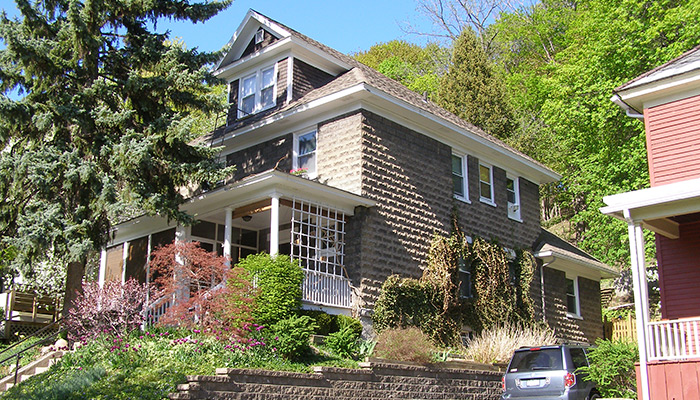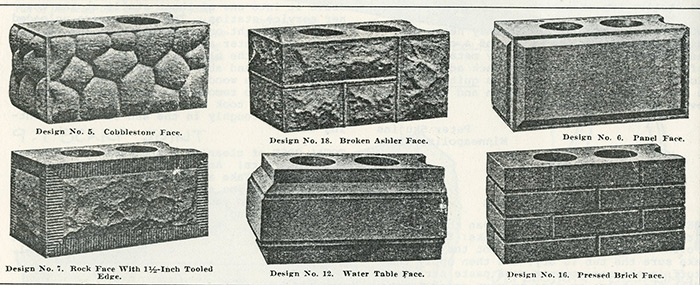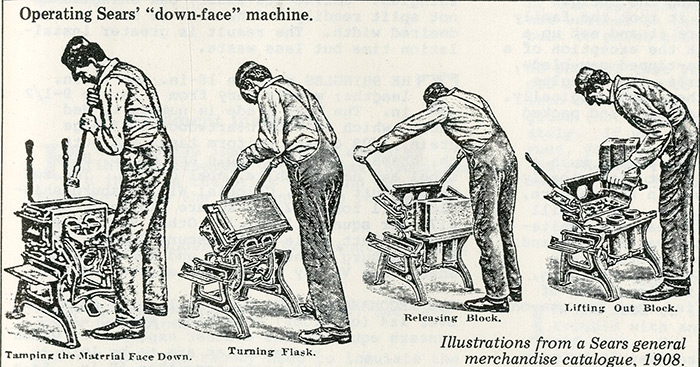Westcott's England
Stop #07
877 Lancaster Ave / Solomon S. Singer House
- Built: ca. 1920?
- Architect: Unknown
Solomon S. Singer (b. 1902) SU ’25, a chemist, lived in this house. The house is notable for being one of the most complete cast block constructed houses in this part of Syracuse.
Cast block is sometimes referred to as cement block, cinder block, or cast stone block. This standardized building material first appeared in the late 19th century and became more and more common in house construction – especially for foundations and garages – through the 1920s. In addition to foundations, some builders enjoyed using cast stone for upper walls and in the Westcott neighborhood there are several houses mostly or entirely build up of these blocks. The walls would be mostly fire-proof and easy to build. They are strong and can carry considerable weight. The air in the hollow blocks also can serve as insulation.
Unlike the common gray cinder block that most people are familiar with (and which often contain few or no cinders) the early cast stones actually tried to look like stone – and their outer faces were formed to imitate roughly cut or faceted stone, similar to earlier field stone or cut limestone blocks. The effect in some houses, like that at 887 Lancaster (and others nearby such as 945 Euclid and 433 Roosevelt Ave.) is a rusticated look.
In the end, the uniformity of the cast stones gives them away, but even this was combated by having a variety of cast stone sizes which could mixed and matched, or in some case single large cast blocks with the facing sides scored in ways that they appeared to made up of several smaller irregular-sized stones. This is the case at 732 Lancaster. Unless you are actively looking for cast stone it is easy to be fooled when quickly passing by.
Cast stone, like most masonry products, was produced locally. The cost of transport – even by train – was just too much to make long distance hauling of concrete stone worthwhile. Almost any locality had the raw ingredients for cast block.
The Aladdin Built in a Day Catalog of 1917 stated that:
Of course, all excavation and masonry work must be done on the ground. No money would be saved by including stone or brick or concrete [in pre-ordered and shipped house kits], but every section of the country produces this material and prices vary but little. We furnish you with the foundation plan and will give you figures on the amount of material required for whatever kind of foundation material you decide to use – concrete, stone or brick….
In Bennett’s Small House Catalog of 1920 most of the houses are shown with cast block foundations.
The Sears catalog of 1910 offers eight pages of products related to cast block production. Do-it-yourself machines for creating blocks of different sizes and shapes were available for only $42.50 for the hand-operated “Wizard Face Down Concrete Block Machine.”


